Clematis belongs to the Ranunculaceae family and has over 370 species. Numerous forms and varieties differ in the size and color of flowers, flowering time, degree of terry, and pruning method. If you are just starting to get acquainted with this plant, then it is better for you to start with clematis varieties of pruning group 3.They are undemanding in care, are perennial and take root in almost any region of Russia.
|
For the central part of Russia, growing clematis from group 3 is most suitable. |
| Content:
|
According to the pruning method, clematis are divided into 3 groups, based on which shoots flowering occurs on.
• 1 group (no trimming)
Clematis that bloom in early spring on last year's shoots are not pruned at all. In case of excessive growth of the bush, it is pruned at the end of flowering at a height of 1 m. The varieties of this group are capricious, so they must be covered for the winter.
• Group 2 (partial trimming)
Large-flowered varieties of this group are characterized by double flowering per season. First - on last year's shoots, in May-June. Then, from July to late autumn, on the shoots of the current year. Plants require pruning of all shoots after the first year of growth at a height of 30-40 cm, and in the second year - 1.5 m from the ground.
• Group 3 (heavy pruning)
Clematis of the 3rd pruning group bloom later, in early July, on the shoots of the current year and bloom for a long time. Varieties of this group are cut short, 5-10 cm from the ground, leaving 2-3 live buds on the shoot. The varieties of this group are mainly herbaceous.
Advantages of clematis belonging to group 3:
- ease of pruning;
- frost resistance;
- undemanding to soil composition and location;
- drought resistance;
- the possibility of forming bushes without loss of flowering volume;
- variety in brightness and shades of flowers;
- long flowering.
Terry varieties belonging to group 3
Among the many varieties of clematis in this group, it is not easy to choose the best one; the variety of shapes and shades of petals will make even the most experienced gardener confused. Terry clematis can be the highlight of any garden. Terry varieties do not have stamens and pistils; they are modified into sepals, the number of which can be 70 or more.
Mazury Crater Lake
|
In the 3rd group of prunings, this is so far the only large-flowered double clematis variety in the world. |
Large double flowers have a rich blue or lilac tint, as well as light spots on the petals, giving the flower lightness. Mazury Crater Lake won an award at an exhibition in Warsaw.
- Plant height is 2-3 m.
- The diameter of the flowers is 17 cm, the leaf petioles tightly wrap around the support.
- Abundant flowering from July to September.
- Feels great in the shade and in the sun. Stimulation is required to improve root formation.
- Frost resistance is high. It is successfully cultivated in the northern regions, provided that the roots are covered for the winter. Climatic zone – 3. Successfully grown in the Far East and in the European zone of Russia. In the northern regions, clematis requires shelter for the winter.
Among the disadvantages of Mazura, it can be noted that the seedlings of the variety take root difficultly and grow slowly. Mature bushes are not very strong, they cannot be used to make a solid wall, and they require careful care.
Purpurea Plena Elegance
|
The variety was bred in France and attracts attention with many small but bright lilac-burgundy double flowers. |
In the center of the flowers there is an almost white pom-pom of petals that have not yet straightened out (light on the back side). In a short period of time, the plant can fill large areas.
- Plant height is 2.2-3.5 m.The leaves have a regular oval shape and densely cover liana-like shoots. The plant has a powerful, well-developed root system; each bush occupies at least 3-4 sq.m.
- Small flowers, 6–7 cm in diameter, bloom along the entire length of the shoots that have grown over the current year.
- Flowering time: June-September.
- Not picky about soil composition, drought-resistant. The flower is sun-loving and when exposed to prolonged shading, it grows slowly and loses its abundance of flowering. With enough sunlight and warmth, up to 150 flowers bloom on each shoot.
- Frost resistance up to – 40 °C. Climatic zone – 3 (Siberia and Far East).
The flower is distinguished by a very long vegetative period, long flowering period and rapid growth. Active growth is used in landscaping arbors and arches, as in the photo. Valued by gardeners for its excellent disease resistance.
Multi Pink
|
The new variety was first presented in June 2019 at an exhibition in Holland. |
An unpretentious and fast-growing liana is strewn with a huge number of semi-double and double flowers of a soft lilac color. Flowers appear evenly on the shoots and decorate the plant until the end of the season.
- Plant height is 2-3 m.
- Large flowers, 20 cm in diameter.
- Flowering time: from June to September.
- Liana responds well to long-acting fertilizers. Bushes should be placed in sun or partial shade.
- Frost resistance - 35°C. Climatic zone: 4 (Central Russia, Primorsky Territory). Does not require shelter for the winter.
Fast growing Multi Pink is ideal for vertical gardening. The liana easily climbs walls, fences, nets and gratings. The crop can be successfully grown in a pot or container.
Taiga
|
An amazing division of each petal in a double flower into two colors. The tip of the petal and the top are yellow-green, the bottom is lilac. |
It endlessly produces buds that open to reveal beautiful dark green foliage. Each flower changes several times during its life.
- Plant height is 2.5 m. The heart-shaped or trifoliate leaves of clematis Taiga are dark green, have smooth edges, and grow separately from each other.
- The diameter of the flowers is average, 13-15 cm.
- Long flowering: June-September.
- For normal growth and development of the plant, you need to choose areas that are in the sun or in light partial shade.
- Frost resistance - 35°C. Climatic zone: 4 (Central Russia, Primorsky Territory). Does not require shelter for the winter.
Taiga is suitable for decorating walls and hedges, as well as for growing in containers. Often planted in borders where there is an opportunity to support and bloom on other plants.
White varieties
It is difficult to imagine a garden plot without plants with white flowers. Among the varieties of clematis of the 3rd pruning group, there are many snow-white ones, which the photos and descriptions provided below will help you choose.
Manchurian (Mandschurica)
|
The flowers are cross-shaped, with a pleasant honey aroma, which becomes more pronounced when exposed to sunlight. |
The pointed petals are white, the stamens and anthers are light yellow. The seeds are numerous.
- Plant height up to 4 m.
- The flowers are small, 2 cm in diameter, up to 500 are formed on each shoot.
- Flowering time: July-September.
- Prefers sunny places protected from drafts. In shade it grows abundant green mass, but does not bloom. Drought resistant.
- Frost resistance up to – 40 °C. Climatic zone – 3 (Siberia, the Urals and the Far East).
Clematis Mandschurica cannot climb a support on its own.When vertical gardening, you will need fixings to trellises. Without support, it behaves like a ground cover - it lies on the surface with a dense cap or crawls along the ground.
Bella
|
The compact plant produces an incredible number of star-shaped flowers. The buds have a delicate pink color, but when they bloom they become snow-white, without any shades. |
- Plant height 2 m.
- The average diameter of the flowers is 15 cm.
- Flowering time: from July to September.
- It is not picky about soil, loves bright places.
- Frost resistance up to – 40 °C. Climatic zone - 3 (Siberia, the Urals and the Far East), tolerates temperature changes or frosts well.
The clematis variety Bella has a very high level of immunity and stress resistance; it is practically not attacked by pests and does not get sick.
Roko-Kolla
|
Roko-Kolla is characterized by abundant flowering. Clings well to supports, coniferous trees and shrubs. Flowering is continuous throughout the season. |
- Plant height is 1.5-2 m.
- The diameter of the flowers is 15-18 cm. The petals of the flowers are creamy-white, star-shaped, with a yellow-green stripe in the middle. The stamens are yellow-cream.
- Long flowering: July-October.
- Prefers acidic soils, sunny places.
- Frost resistance up to – 40 °C. Climatic zone – 3. Does not require shelter for the winter.
Used for planting near arbors, arches, trellises and other garden supports.
Paul Farges
|
The bush is densely covered with small white flowers. From a distance it looks like a snowdrift. Therefore, this variety has another name - Summer Snow. |
The delicate aroma of flowers intensifies in the evening. The rhizome does not spread throughout the garden, which makes it easier to control the growing area.
- The height of the plant is 4-7 m. The number of shoots increases gradually every year.The leaves are large, consisting of 5 or 7 small leaflets.
- Flowers with a diameter of 3-6 cm grow in groups of 3-6 pieces. The petals are white with a cream stripe in the center. The anthers are light yellow.
- Long flowering: July-October.
- Grows well in sunny areas, but can also be grown in partial shade. In this case, flowering will be less abundant.
- Frost resistance up to – 35 °C. Climatic zone – 4 (Central Russia, Primorsky Territory).
Paul Farges is growing very quickly. The shoots independently climb the support.
Blue, purple varieties
Blue and purple clematis varieties are more common than others because when crossed, these shades dominate and are inherited more often.
Elegia
|
Bred in 1963, but still remains the standard of breeding work. Clematis Elegia has long, abundant flowering, even in cloudy and rainy weather. |
- The height of the plant is 3.5-4 m, differs from other varieties in its thin branches, and has a powerful root system.
- The flowers are large, 10-15 cm in diameter, blue-violet with a dark stripe in the middle of the petals, the anthers are red.
- Flowering time: July-October.
- Grows well in any climate and on all types of soil. Prefers partial shade.
- Frost resistance up to – 35 °C. Climatic zone – 4 (Central Russia, Primorsky Territory).
Elegy is popular due to its versatility of use and is used everywhere for landscaping.
Stasik
|
The variety was bred by Maria Sharonova in 1972 and named after her grandson. |
The flower has a pleasant purple hue with contrasting white stripes on the reverse side and looks impressive on thin stems. It is notable for two qualities - lush flowering and an abundance of shades.
- The height of the bush is 1 - 1.5 m. The stems are thin and durable. The oval leaves are bright green in color with a smooth surface and pointed tips.
- Flowers with a diameter of 9-12 cm open very widely, the sepals slightly overlap each other.
- Flowering time: July-September.
- The variety prefers to grow in sunny places. Easy to care for.
- Frost resistance: – 35 °C. Climatic zone – 4 (Central Russia, Primorsky Territory).
Peak flowering occurs in the third year. The Stasik variety is rarely affected by fungal diseases. Recommended for landscaping balconies, loggias, and low objects.
Jackman (Jackmanii)
|
The flowers are dark purple with a blue tint, the anthers are green. The rate of growth and formation of shoots is average. Flowering is abundant. |
- The height of the bush is 3-4 m, the leaves are large.
- Flowers with a diameter of 10 - 15 cm are equipped with 4-6 diamond-shaped sepals with a pointed end. The buds are ovoid, gray-violet, directed downward or to the side.
- Flowering time: late June-September.
- Adapts well to growing conditions.
- Frost resistance: – 35 °C. Climatic zone – 4. In the Moscow region it winters without shelter.
Like most clematis from pruning group 3, it has excellent immunity, hardiness and high frost resistance. High growth rates contribute to earlier flowering compared to other representatives of the group.
Nikolay Rubtzov
|
Large-flowered clematis is a chameleon. The saturation of lilac color depends on weather conditions and lighting. Over time, the color fades in the sun. |
- Plant height is 2.5-3 m. The leaves are compound, three to five leaflets, dense, green.
- The flowers are single, open, 14 cm in diameter. They contain 5-6 diamond-shaped sepals, bright lilac in color, lighter towards the center. The anthers are light yellow.
- Flowering time: July-October.
- Prefers sun or partial shade, sheltered from the wind.
- Frost resistance: – 35 °C.Climatic zone – 4 (Central Russia, including the Moscow region, Primorsky Territory).
To get a more saturated shade of the petals of clematis Nicolaj Rubtzov, you should plant it in an area shaded from the bright sun.
Rahvarinne
|
An elegant late-flowering variety bred by Estonian breeders. Irregular purple flowers with a dark central stripe and beautiful texture. |
- Bush height: 1.5-1.8 m. Shoots are brittle.
- The flower, 13 cm in diameter, consists of 6 oval sepals. The petals are curved, wide, with wavy edges, slightly overlapping each other.
- Flowering time: end of July - October.
- The location prefers sunny or partial shade.
- Frost resistance: – 35 °C. Climatic zone – 4 (Central Russia, Primorsky Territory).
The compact and spectacular vine looks great on a vertical trellis in the garden and in a flower pot on the balcony.
Blue Pirouette
|
The first clematis that is suitable for cutting into bouquets. A hybrid variety that grows as a compact bush. It blooms luxuriantly all summer on the current year's shoots. Towards the end of flowering, the petals darken to purple. |
- Bush height 1 m.
- Blue bells with a diameter of 7-10 cm with twisted petals on long petioles turned upward.
- Flowering period: June-September.
- Prefers shade and partial shade, is not picky about soil.
- Frost resistance: – 35 °C. Climatic zone – 4. Does not require shelter.
The variety is intended for cutting, container growing and planting in mixed garden compositions.
Cloudburst
|
The variety is characterized by abundant and long flowering. The lilac color gradually thickens towards the tips of the petals and fades towards their base. Blackcurrant touches complement the color scheme. |
- The height of the vine is 3 m.
- The flowers are expressive, 12 cm in diameter.The petals are diamond-shaped and wavy. The anthers are golden with dark tips.
- Flowering period: June-September.
- Prefers to grow in sun or partial shade.
- Frost resistance: – 35 °C. Climatic zone – 4. Grown throughout central Russia.
The lilac waterfall will turn any garden building into a masterpiece.
Red, burgundy, pink varieties
There are not as many clematis with red flowers as with purple ones. Therefore, they always stand out among the variety of varieties.
Ville de Lyon
|
This clematis variety of pruning group 3 with carmine-red flowers is characterized by abundant flowering and rapid growth. |
The Ville de Lyon variety has rounded flowers and teardrop-shaped leaves. The color of the flowers fades in the sun.
- The height of the vine is 3 m. The shoots are creamy at first, becoming brown as they become lignified. The number of vines in one plant reaches 15 pieces.
- The flowers are simple, 10-15 cm in diameter. The petals are wide, overlapping each other. The anthers are golden.
- Flowering time: July-September.
- Frost resistance: – 35 °C. Climatic zone – 4. Grown throughout central Russia. Does not require shelter for the winter.
Thanks to its rapid growth, the vine easily reaches its maximum height. When supported on a trellis or arch, the bush forms a dense green wall.
Inspiration (INSPIRA)
|
At the Chelsea Flower Show 2015-2016, the variety was recognized as the best ground cover plant and the best clematis for cutting. |
It blooms with medium-sized red flowers. Quickly covers small areas with a colorful carpet. Goes well with any plants in the garden and flower bed.
- The height of the plant is 1.7 m. It does not cling to supports, but can lean on them.
- Flowers, 8 cm in diameter, with wavy petals and contrasting yellow stamens.
- Flowering time: June-September.
- It blooms more abundantly in the sun; in partial shade the number of flowers is reduced. Responds gratefully to feeding.
- Frost resistance: – 33 °C. Climatic zone – 4. Grown in the Middle Zone, the Urals, and the Far East.
Suitable for growing in containers.
Duchess of Albany
|
The variety is well suited for planting between other vines. In autumn and winter it is covered with decorative fruits. |
Small flowers with original colors. Bright pink petals with a crimson stripe in the middle. Particularly good for growing near fences, arbors, arches, trellises. Can climb small trees and bushes.
- Plant height is 2-3 m. Growth is moderate.
- The flowers are deep pink, tulip-shaped, 5-8 cm in diameter, and have 4-6 sepals. The anthers are pink. The petals are fleshy, looking upward, the tips are bent.
- Flowering time: July-September.
- Grows and blooms well in sunny or semi-shaded places. After planting it takes a long time to take root.
- Frost resistance: – 29 °C. Climatic zone – 5. It requires shelter for the winter in the northern regions.
This clematis variety received The Royal Horticultural Society's Award of Garden Merit in 1897 and the RHS Award of Garden Merit in 1993.
Princess Diana
|
Fast growing, strong clematis. The bright pink, funnel-shaped flowers stick out beautifully in all directions. Blooms for a long time, in waves. |
- Plant height is 2.0 - 2.5 m, the leaves are light green.
- The diameter of the bell flowers is 5-7 cm, the dense texture of the petals. The stamens are yellow.
- Flowering time July–October.
- He loves bright places, the plant is quite sensitive to drought and insufficient moisture.
- Frost resistance: – 29 °C. Climatic zone – 5. In severe winters in the Urals and Siberia, it requires shelter. In the Moscow region it winters without protection.
Gardeners value the Princess Diana variety not only for its decorativeness, but also for its unpretentiousness, abundance and duration of flowering.
Gravetye Beauty
|
The flowers are red, opening wide. In autumn and winter it is decorated with decorative fruits. One of the best varieties with red petals. |
- Plant height is 2-4 m. Shoots cling to supports with leaf petioles.
- The flowers are tulip-shaped, drooping, up to 5-9 cm in diameter. Sepals 4–6, curved outward. The color of the sepals ranges from intense pink to purple-red. The filaments are creamy, the anthers are red or dark red.
- Flowering time: July-August.
- Prefers fertile, moist, well-drained soil. Grows especially well in sunny, warm and protected places.
- Frost resistance: – 29 °C. Climatic zone – 5. In the northern regions, it is recommended to cover the crop for the winter.
Can climb natural supports. You can plant Gravetye Beauty next to a lilac or juniper bush to get the effect of a flowering tree.
Rouge Cardinal
|
Brought out in France at the end of the 20th century. Large flowers with a petal shade reminiscent of a cardinal's velvet robe. |
The Rouge Cardinal variety clings well to surfaces. If you allow the vine to come into contact with the tree, it will completely cover it within a season. One of the best varieties of clematis of group 3, is the owner of a gold medal and certificate at the International Exhibition.
- The height of the vine is 2-4 m. Young shoots of the plant have a characteristic light green tint. The leaves are trifoliate, the root system is powerful.
- The diameter of the flowers is 16 cm.
- Flowering time: late June-September.
- Frost resistance: – 29 °C. Climatic zone – 5. For the winter it is convenient to cover with buckets or spunbond from cold winds and snow drifts.
For clematis, experts recommend using a vertical mesh as a support. This way the plant will look like a living wall, strewn with flowers on both sides.
Planting and caring for clematis 3 pruning groups
When choosing a place to plant clematis varieties belonging to pruning group 3, you should know that the crop loves sunny places, but growing in partial shade is also permissible. In full shade, clematis will not produce full flowering.
When growing a crop in a sunny area, it is advisable to cover the tree trunk circle by planting annual plants that will protect the tree trunk circle from drying out.
You should avoid growing clematis in drafts, as well as in wetlands, lowlands, and near drains.
The favorable time for planting crops is spring, although any other time is also possible. But when planted in spring, the plant will have time to take root better and will overwinter safely.
Planting in open ground
The size of the planting hole for one plant should be 50x50 cm. The bottom of the hole is covered with a layer of broken bricks and expanded clay as drainage.
The soil for clematis should be loose, air- and moisture-permeable, and nutritious. When preparing the soil yourself, it is enough to mix peat, manure, sand and garden soil in equal proportions. It is also necessary to add 100 g of fertilizer for clematis and 1 liter of ash.
The roots need to be straightened. The root collar is sprinkled with sand to prevent rotting. Clematis are planted deep (up to 14 cm), which contributes to the formation of a voluminous bush, as well as to increase winter hardiness and protection from overheating in summer. If you plan to plant several seedlings, then the distance between them is maintained at least 1 m.
Care
Clematis likes regular and abundant watering, at least once a week. The soil must be moistened to a depth of 30–50 cm. After watering, if the planting is not mulched, the soil must be loosened.
Clematis can be fertilized already in the second year of cultivation. To increase green mass, nitrogen fertilizers are used; during the formation of buds and after flowering, phosphorus-potassium fertilizers are used. The crop responds well to feeding with slurry.
The simplest point in caring for clematis from this pruning group is the actual pruning. All lashes are cut at a distance of 5-10 cm from the ground, leaving 2-3 live buds.
Preparing for winter
In order to prepare group 3 clematis for winter, there is no need for a capital structure to cover them, since short shoots remain after pruning.
The main thing is to activate the formation of a large number of new shoots in the spring. This is achieved by short pruning of the shoots after the first frost. Then the base of the bush is covered with earth and sprinkled with humus, straw or leaf litter on top.
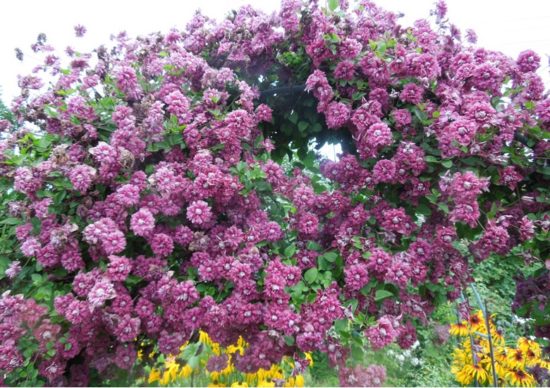
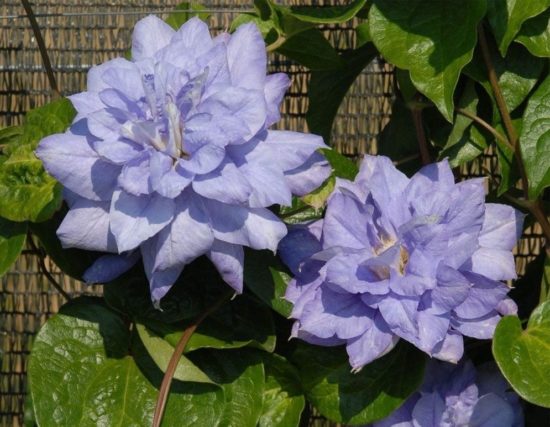
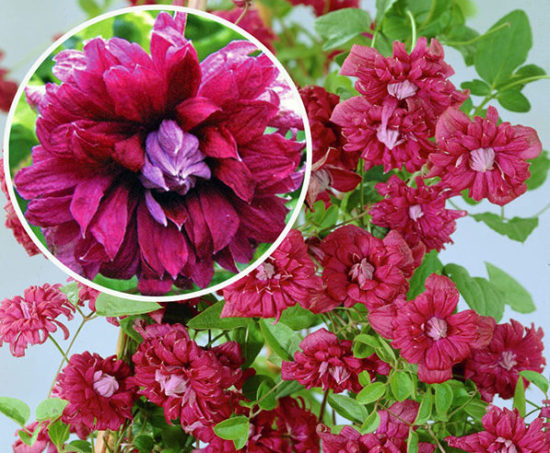
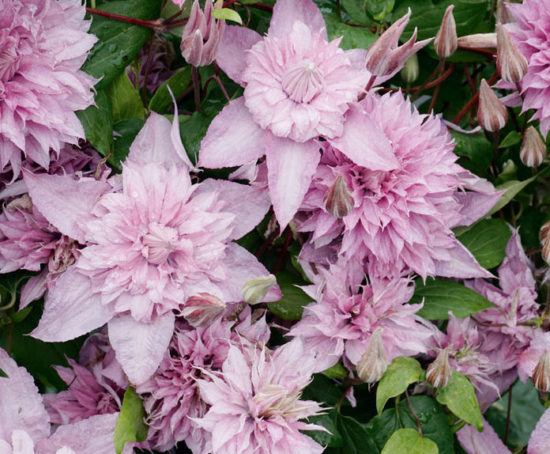
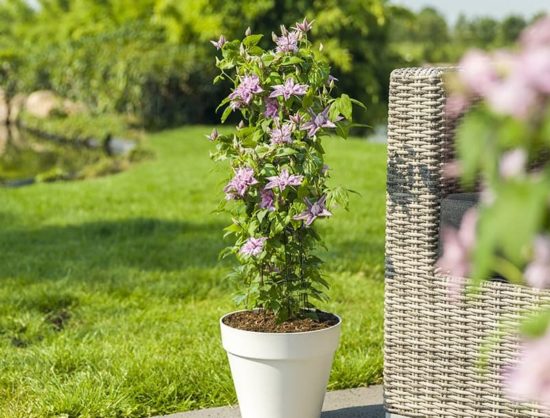
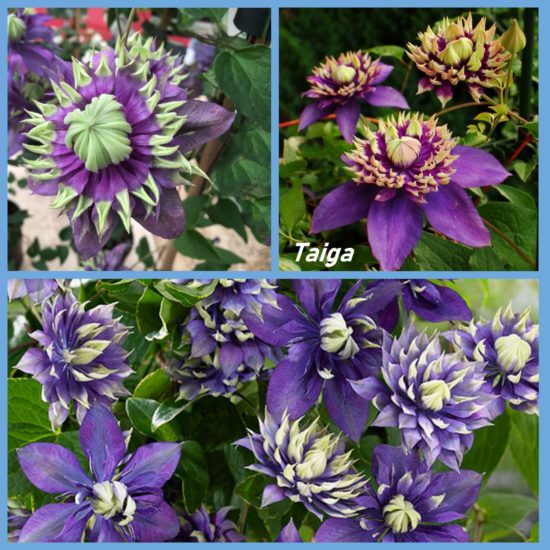
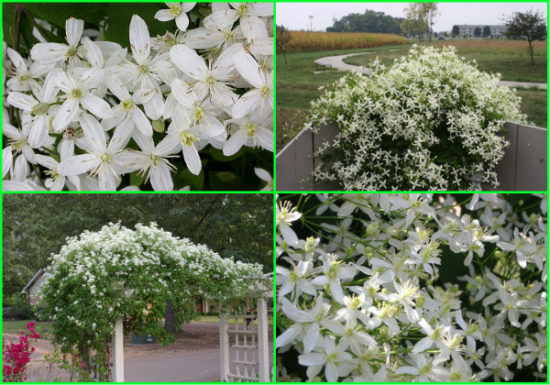
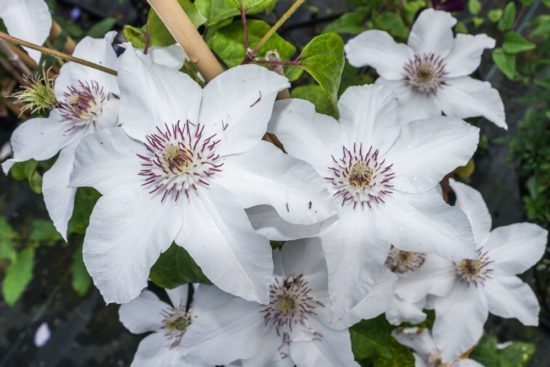
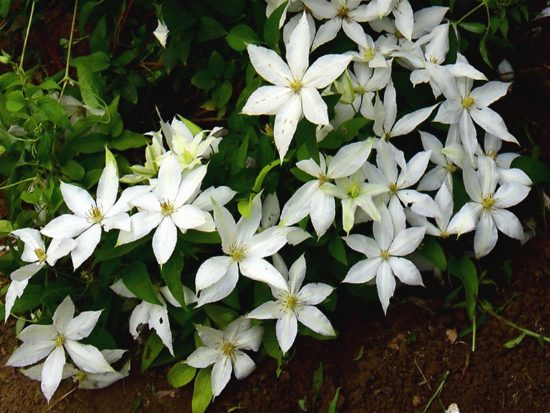
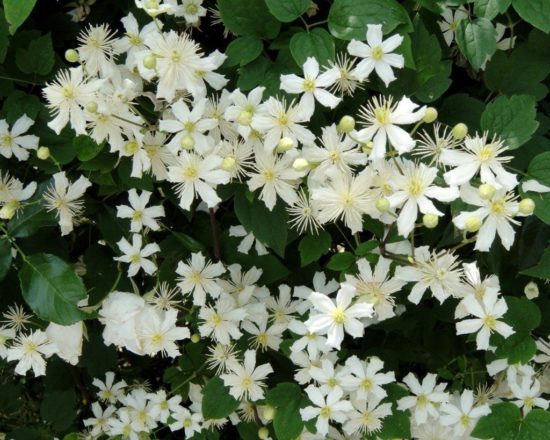
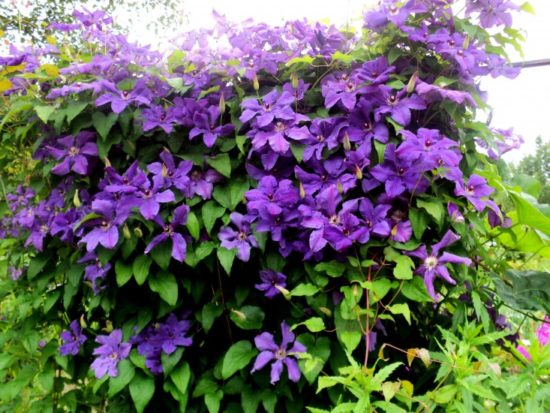
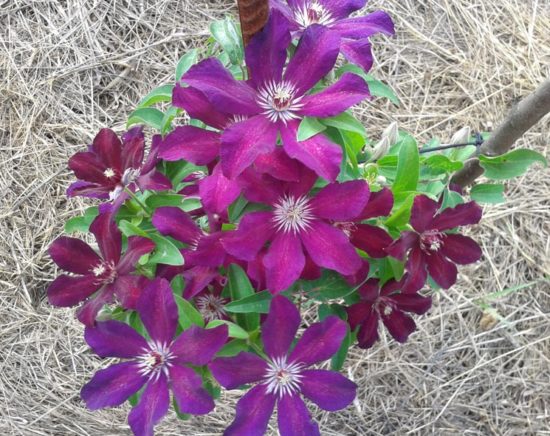
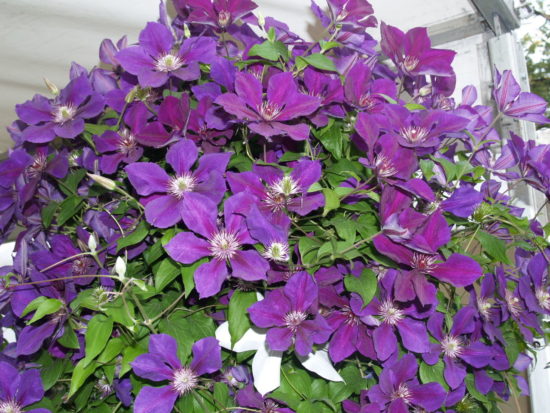
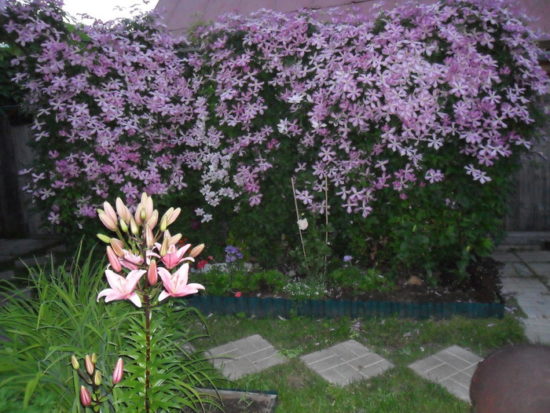
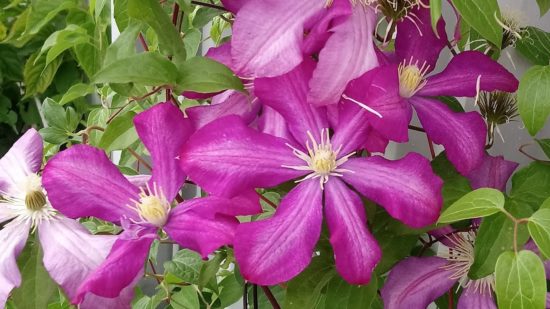
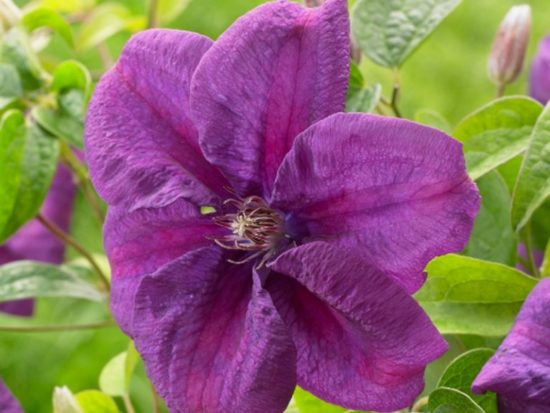
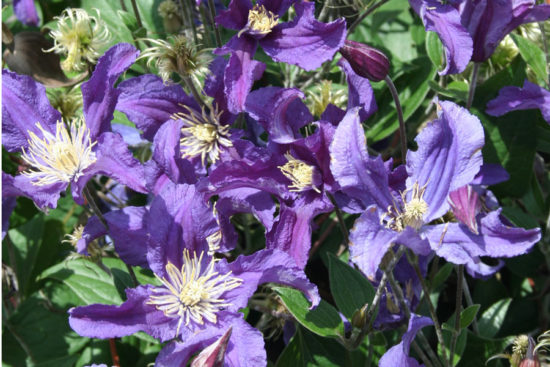
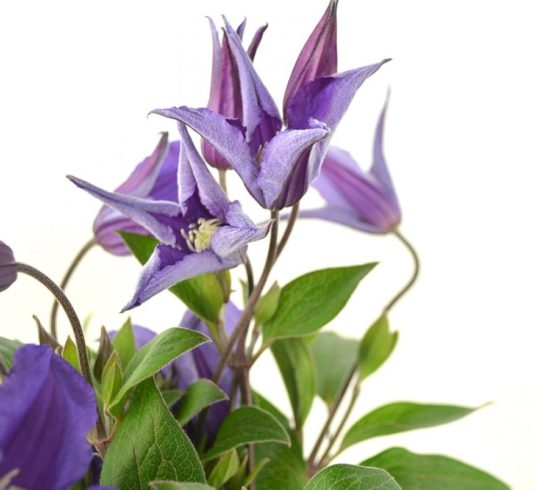
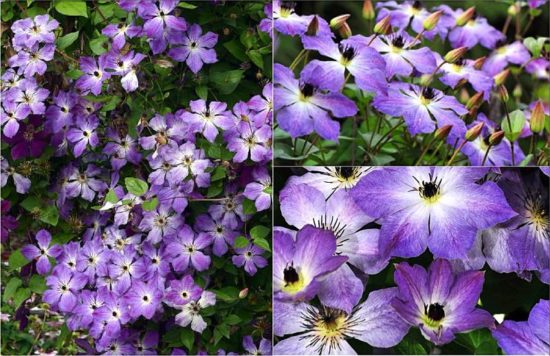

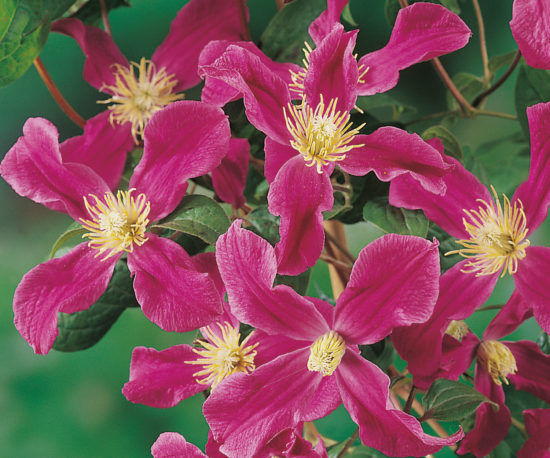

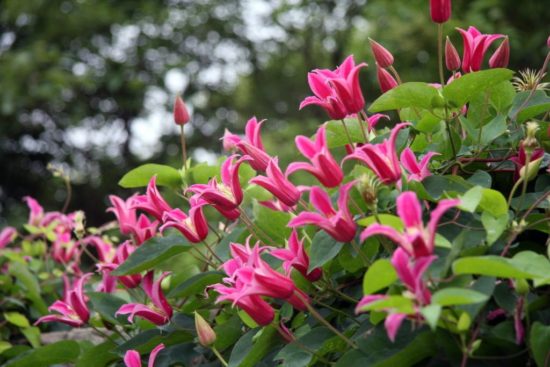
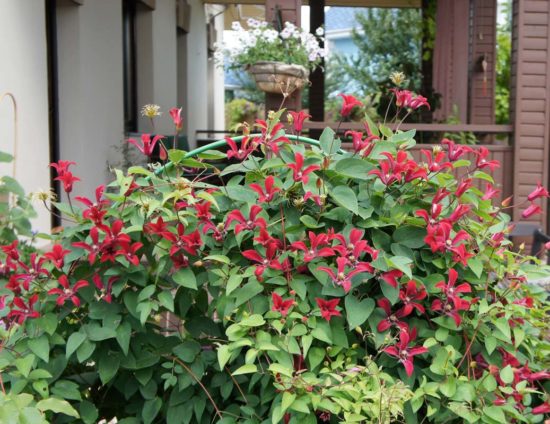
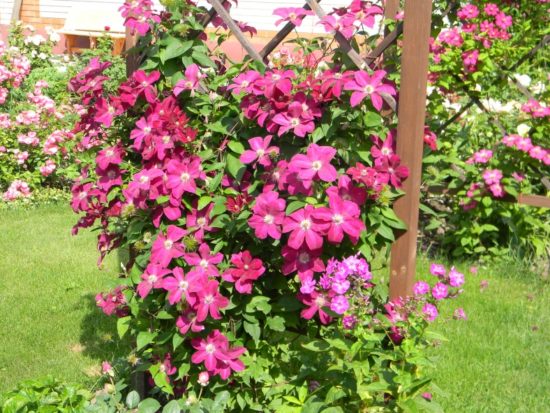

 (9 ratings, average: 4,67 out of 5)
(9 ratings, average: 4,67 out of 5) CUCUMBERS NEVER GET SICK, I'VE BEEN USING ONLY THIS FOR 40 YEARS! I SHARE A SECRET WITH YOU, CUCUMBERS ARE LIKE THE PICTURE!
CUCUMBERS NEVER GET SICK, I'VE BEEN USING ONLY THIS FOR 40 YEARS! I SHARE A SECRET WITH YOU, CUCUMBERS ARE LIKE THE PICTURE! You can dig a bucket of potatoes from each bush. Do you think these are fairy tales? Watch the video
You can dig a bucket of potatoes from each bush. Do you think these are fairy tales? Watch the video
 How our fellow gardeners work in Korea. There is a lot to learn and just fun to watch.
How our fellow gardeners work in Korea. There is a lot to learn and just fun to watch. Eye trainer. The author claims that with daily viewing, vision is restored. They don't charge money for views.
Eye trainer. The author claims that with daily viewing, vision is restored. They don't charge money for views. A 3-ingredient cake recipe in 30 minutes is better than Napoleon. Simple and very tasty.
A 3-ingredient cake recipe in 30 minutes is better than Napoleon. Simple and very tasty. Therapeutic exercises for cervical osteochondrosis. A complete set of exercises.
Therapeutic exercises for cervical osteochondrosis. A complete set of exercises. Which indoor plants match your zodiac sign?
Which indoor plants match your zodiac sign? What about them? Excursion to German dachas.
What about them? Excursion to German dachas.
According to experienced gardeners, clematis can replace several types of flower crops and completely decorate the garden. This is due to the fact that plants of this species can be grown either by liana or conventional methods.Clematis are divided into several pruning groups: the best varieties, which belong to group 3, bloom profusely for several months. Clematis are liana-type plants, which are informally called clematis or vines. They are used for planting along hedges, as well as for decorating a terrace or porch. The advantage of this crop is its abundant flowering. Flowers on the stems of varieties of pruning group 3 develop from new shoots. This means that last year's shoots do not bloom and need to be removed regularly.
In short, I understand that you have fun here even without me))